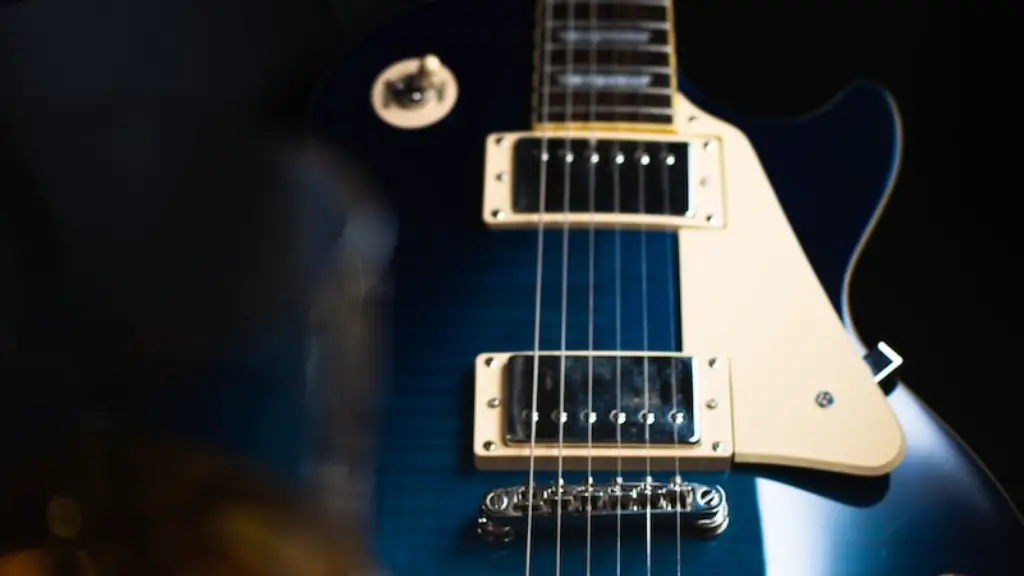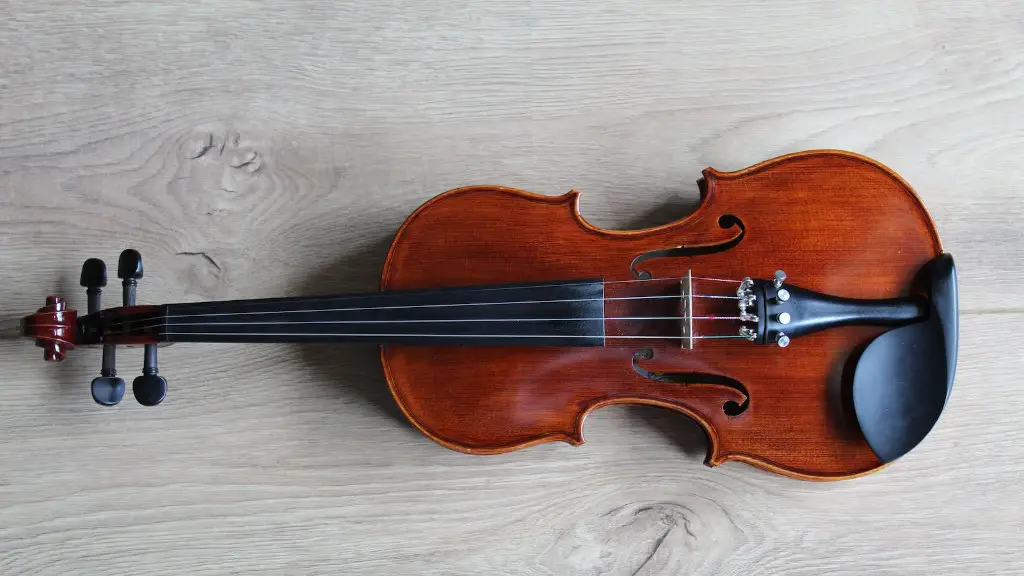Selecting the right electric guitar can be an overwhelming task. With so many styles, shapes and sizes to choose from, it can be difficult to decide which one is the best for you.
The first step is to identify your budget and playing style. This will help narrow down your choices and make selecting a guitar easier. Consider the type of music you want to play, as different guitars are better suited for different genres.
Next, consider the pickups and body shape of the guitar. Pickups are crucial in determining your sound, while body shape will affect playability and comfort level. You should also consider the size of your hands when selecting a guitar; larger bodies may require larger hands to reach certain positions on the fretboard.
Finally, take time to research all of your options before making a purchase decision. Visit your local music store or shop online and try out as many guitars as possible until you find one that suits your needs. Once you have made your selection, don’t forget to tune up regularly and practice hard!
Once you have selected a suitable electric guitar, it’s time to start playing – enjoy!
Selecting an Electric Guitar
Electric guitars come in a variety of shapes, sizes, and price ranges. When selecting the right electric guitar for you, the first step is to consider your budget and needs. If you are just starting out, it may be best to choose an entry-level model like a Squier or Epiphone. These guitars typically offer excellent playability and sound quality at a reasonable price. For experienced players looking for something more advanced, there are a number of mid-range to high-end electric guitars available from Fender, Gibson, Ibanez, ESP/LTD, PRS, and other popular brands. Many of these models feature professional-grade hardware and electronics that can help you take your playing to the next level.
It’s also important to consider your playing style when selecting an electric guitar. Are you looking for something with heavy metal tones or do you prefer vintage jazz tones? Different models offer different tonal characteristics that may suit different genres better. Ultimately it comes down to personal preference when selecting an electric guitar – so be sure to try out several models before making your final decision!
Decide on the Style of Guitar You Want
Choosing the right electric guitar for you can be a daunting task. There are many different styles, shapes, and sounds to consider. It is important to take your time and research the different types of guitars and their features so that you can make an informed decision. Consider factors such as body shape, pickup configuration, neck width, scale length, and overall sound when deciding which type of guitar is best for you.
One of the most popular electric guitar styles is the solid-body guitar. This type of electric guitar has a solid wood body and two pickups to create a wide range of tones. The Stratocaster and Telecaster are two classic examples of this style. Other popular electric guitars include hollow-body guitars, semi-hollow body guitars, and acoustic-electric guitars.
When selecting an electric guitar, it’s important to play as many different models as possible in order to find one that fits your playing style and comfort level. Consider factors such as string action, weight distribution, fretboard radius, neck width, bridge type, and intonation when making your decision. Doing research online or talking with experienced players can help you determine which guitar will be right for you.
How to Select an Electric Guitar
It’s important to take some time when selecting an electric guitar. Different guitars have different features that can affect the sound and playability. Body shape, scale length, pickups, and hardware all make up a guitar’s characteristics. It’s a good idea to try out a few different guitars before making your purchase.
The size of the body is one factor to consider when selecting an electric guitar. Generally speaking, larger bodies provide more resonance and sustain. Smaller bodies are generally easier to play and may be preferable for those with smaller hands or for those who prefer a lighter instrument.
Scale length is another factor that affects the sound of an electric guitar. Longer scale lengths provide greater tension, which often results in a brighter tone and improved sustain. Shorter scale lengths are typically easier to play but may not provide as much punch in the low end frequencies.
Pickups are also an important consideration when choosing an electric guitar. Different pickups can produce different tones, from bright and sparkly cleans to warm and thick distorted tones. Single-coil pickups have a brighter sound while humbucking pickups offer greater output and fuller tones.
Finally, hardware such as the bridge and tuning machines should also be taken into account when selecting your electric guitar. Higher quality hardware provides better tuning stability and better sustain overall.
Electronics and Pickups
When selecting an electric guitar, the electronics and pickups are an important factor. The electronics refer to the volume and tone knobs, as well as any switches that may be included. The pickups are the magnets that convert the string’s vibrations into electrical signals that can then be amplified. Single-coil pickups provide a bright, snappy sound, while humbucker pickups offer a warmer, full-bodied tone. It is also important to consider what type of music you will be playing when selecting your pickups. For example, if you are playing metal or rock music, humbuckers may suit your needs better than single-coils. However, if you are playing jazz or blues, single-coils may be a better option. Additionally, some guitars have active pickups which offer more control over the sound produced by adjusting the gain or frequency response.
Depending on your budget and desired sound quality, you can select a variety of different electronics and pickup combinations for your electric guitar. With so many options to choose from it is important to research each component in order to make an informed decision that best suits your individual needs.
Neck and Fingerboard
When selecting an electric guitar, the neck and fingerboard are two important components that can determine how comfortable and easy the instrument is to play. The neck of the guitar should be comfortable for your hand to move along, allowing for clean transitions between notes. The fingerboard should also be smooth and even, providing a comfortable playing surface. Additionally, check that the frets are even and uniform in height. A good quality instrument will have a neck and fingerboard that are well finished, with no sharp edges.
When considering a guitar’s neck, it is important to pay attention to the shape of it as well as its width. Different shapes provide different levels of comfort as well as playing styles; for example, a “C” shape is much more comfortable for fingerstyle playing than a “V” shape would be. Additionally, make sure that the fret spacing is spaced correctly for your hand size; too close together can cause difficulty when playing chords or jumping across strings. It is also important to consider the material used for both components; certain woods provide better sound quality than others. Taking all these things into consideration will ensure you find an electric guitar that fits your needs perfectly.
Pay Attention to Body Materials
When shopping for an electric guitar, one of the key elements to consider is the body material. Different materials provide different tones and levels of sustain. Common materials used for electric guitar bodies include solid wood, laminate wood, and synthetic materials such as plastics and resins. Solid woods are known for providing a rich, natural sound with lots of warmth and sustain. Laminate woods are often less expensive than solid woods and are generally more durable since they’re made of several layers of wood pressed together. Synthetic materials can provide a lightweight option that’s easy to carry around, but may not have the same resonance as a solid wood instrument. It’s important to consider the type of music you plan to play and what tonal qualities you prefer when deciding on body material.
Ultimately, selecting an electric guitar comes down to personal preference. Experimenting with different types of guitars is the best way to find out what works best for you.
Closing Words
Selecting the right electric guitar to suit your needs can be tricky. It’s important to consider the type of sound and style you’re looking for, as well as the feel of the guitar in your hands. Start by setting a budget and researching different models in that price range. Consider all factors, such as wood, pickups, electronics, and hardware. Finally, take time to play a few guitars until you find one that speaks to you. With patience and research, you’ll be able to find an instrument that perfectly fits your needs!





